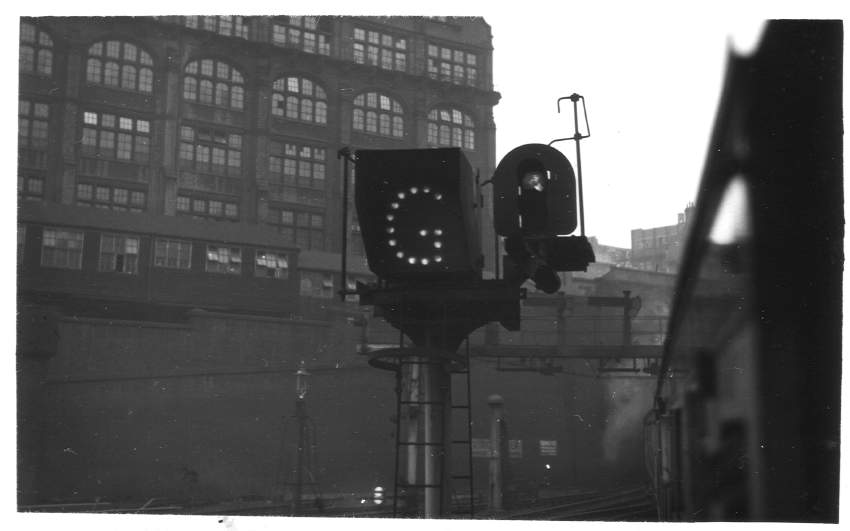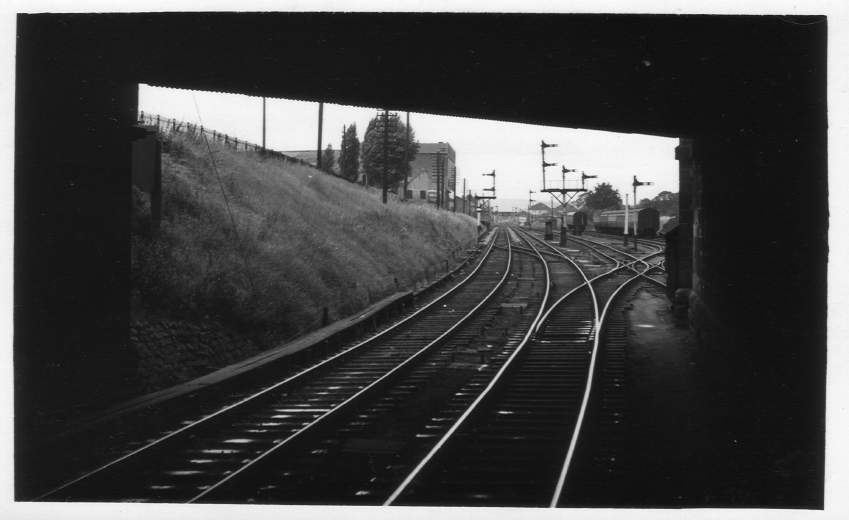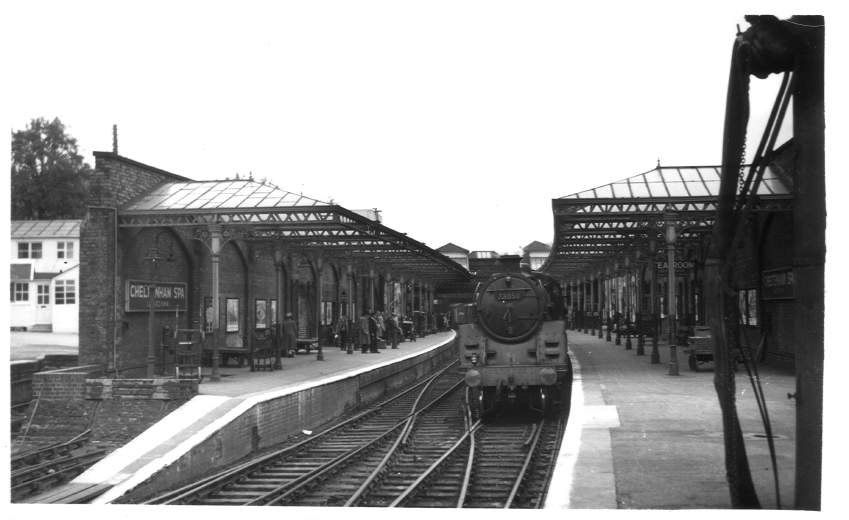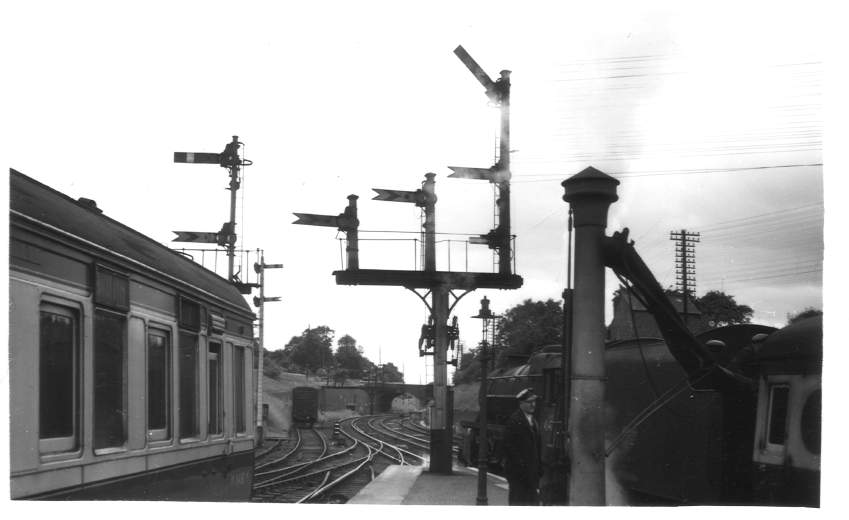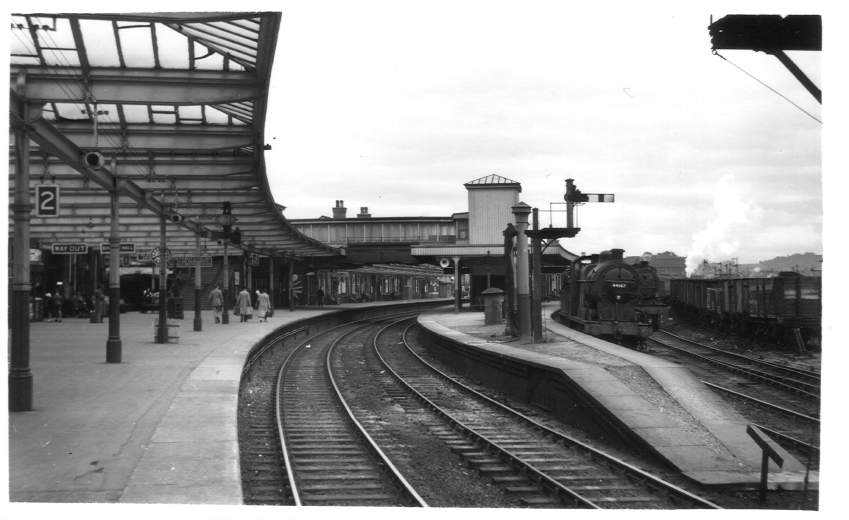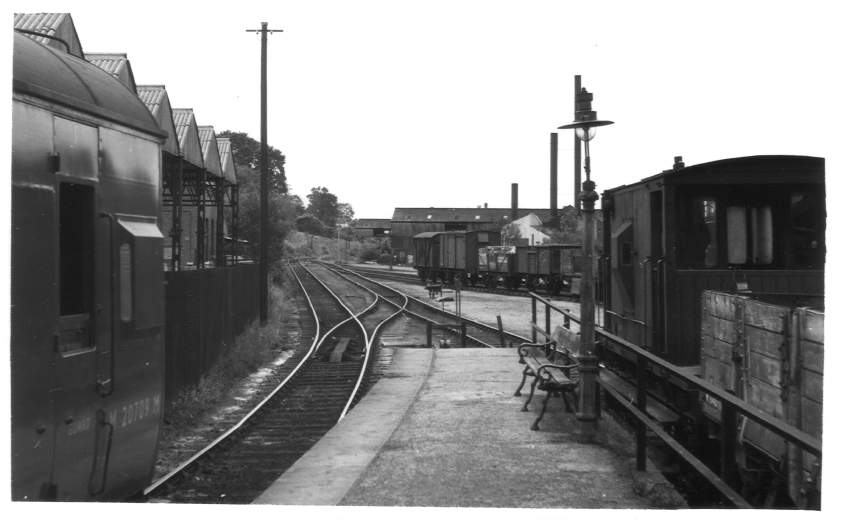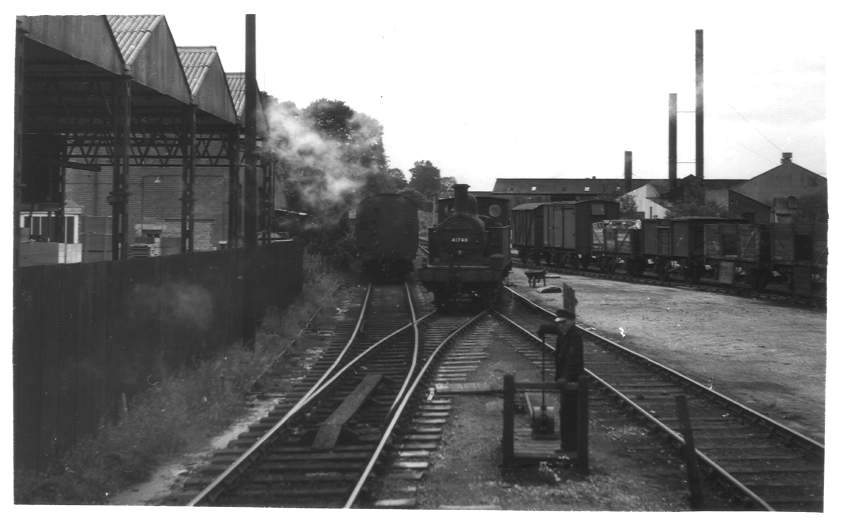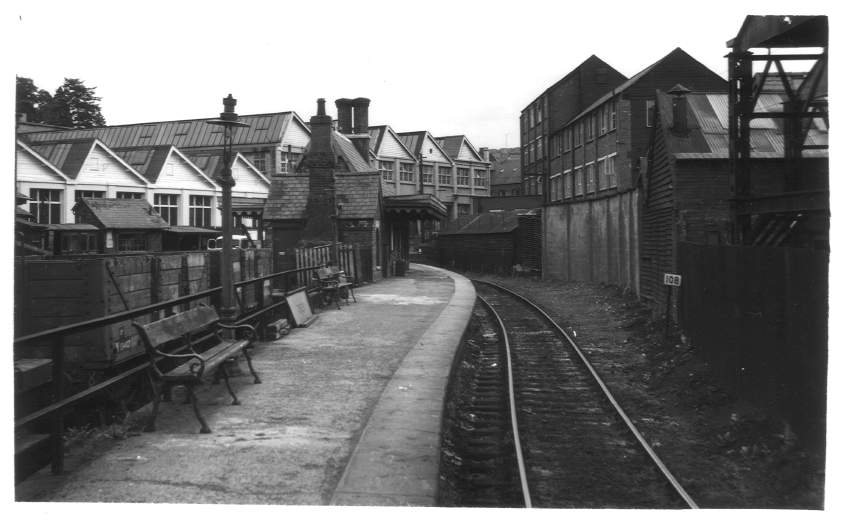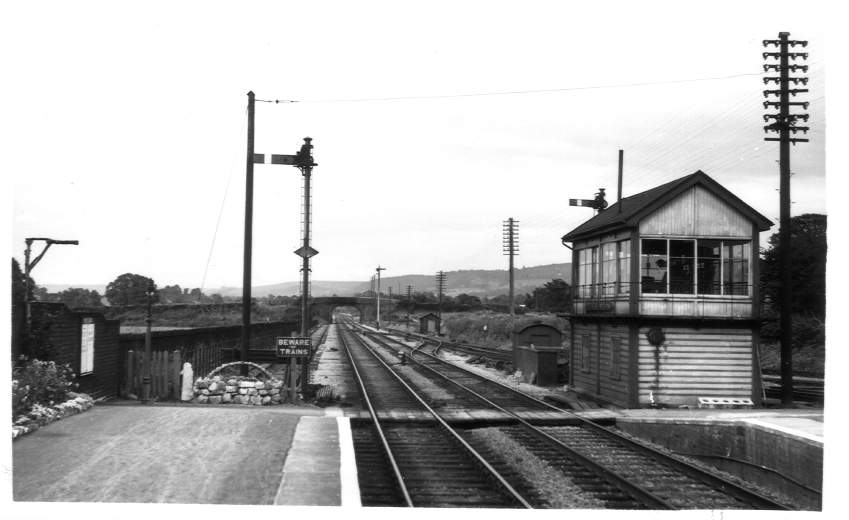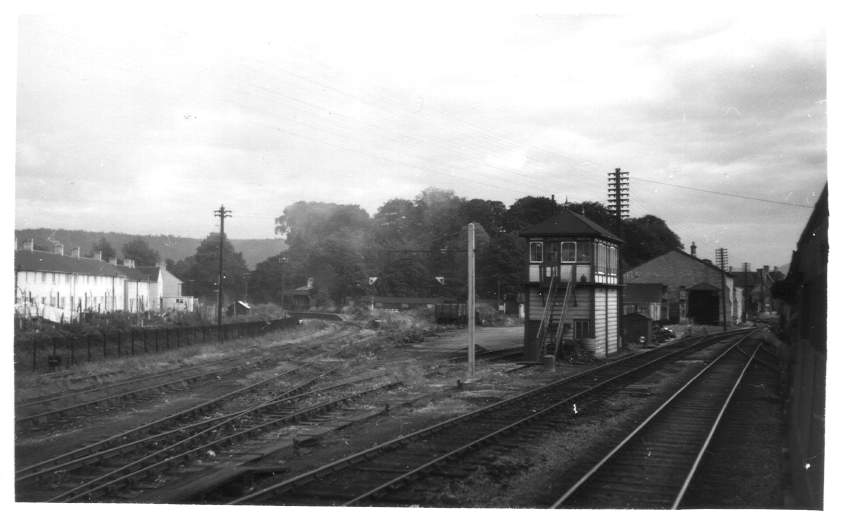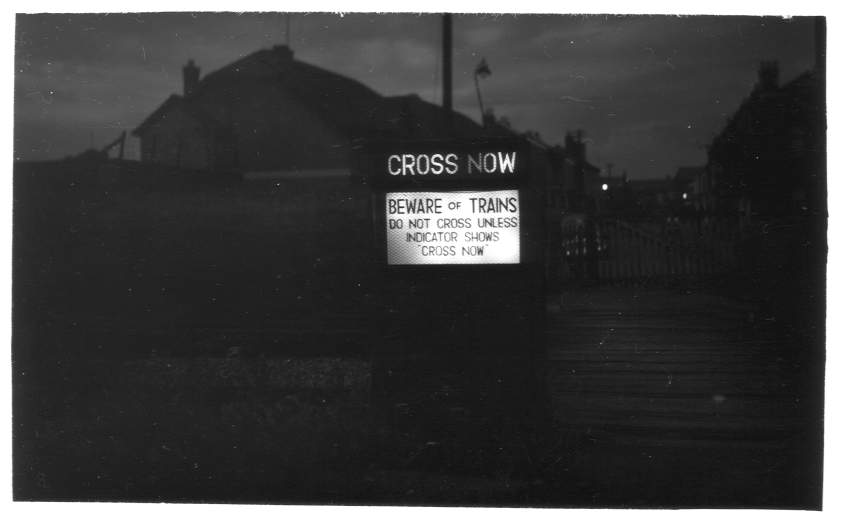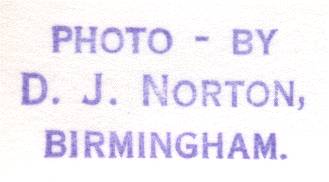
Dad's Day Out - 29/7/54
Colourlight nr New St No. 5 Box - 29/7/54
|
|
|
|
| I first posted this picture on
the New Street Station at Work 1950-1964
page where Jonathon suggested
that, "The G in the photograph probably means that the train has
clearance for the line to King's Norton, as it would appear that line
is known as 'the Gloucester' even now. Probably a reference to the old
Birmingham and Gloucester Railway". Given our destination today I
think he's spot on and can now understand why my father took this
picture. |
Cheltenham Spa (Lansdown) Stn -
29/7/54
|
|
|
|
| First stop is Cheltenham
Spa (Lansdown) Station. Originally a Birmingham & Gloucester
Railway station built in 1840, this is now the town's main station and
some current pictures can be found here. This picture was taken from the northern end of platform 1 and is looking south. |
N End of Cheltenham Spa (Lansdown) Stn - 29/7/54
|
|
|
|
| This shot
was taken from the very northen extreme of the station and is looking
under Gloucester Road. As well as the sidings to the right, there
is a signal box visible in the distance. Stuart got in touch and provided the following information about this shot: "The building directly to the left was the Bristol omnibus garages and depot and the signal box in the distance stood on Alstone Lane and controlled a level crossing and pedestrian gates across the main line. I used to stand here when I was young just to see the signalman heave the huge wheel round to shut the gates across the road. The bridge in the far distance went across Arle road and was also a favourite spot for train spotters as there was an allotment site right next to it. Think lots of assorted fruit through the summer." |
73050 71G Lansdown Stn - 29/7/54
|
|
|
|
| Now my
father has moved to the southern end of platform 1 and is looking
north. Recently built BR Standard 'Class 5' 73050 from Bath
(Green Park) shed looks ready to depart as there are no passengers left
on the platform. Note the water tower to the far right that is
seen in the picture directly below. I always get a bit of a buzz when I discover that one of the loco's my father photographed survives in preservation. This is the case with 73050 which now runs on the Nene Valley Railway. |
S End of Cheltenham Spa (Lansdown) Stn - 29/7/54
|
|
|
|
| Now looking
south from close to the location of the picture directly above, an
unidentified 'Black Five' (first three digits 454 is all I can see) is
taking on water. This loco is probably pulling the train that
will take my father to his next port of call. The road bridge in the distance carries Lansdown Road from which the station took its name. |
S End of Gloucester (Eastgate) Stn -
29/7/54
|
|
|
|
| In the
pre-BR days Gloucester was served by LMS and GWR and, given my father's
allegiance to the LMS, it's not surprising that his visit was to the
ex-Midland Eastgate station. This station sat on the Tuffley Loop
that was closed in 1975, partly as a cost saving exercise and partly to
remove many of the level crossings that affected road users in the
town. There is more
information
about this line on the excellent Disused Stations site.
Also, there are some more pictures at the
bottom of this page as my father stopped off at Gloucester on the
return leg of this day out. This picture was taken from the southern end of the station and is looking north east. My father was stood on platform 2 but sadly the station clock is obscured by a cast iron post otherwise we could have discovered what time he was there! The loco stood at what I thought was a bay to the right is Class 4F 0-6-0 'Fowler' 44167. David corrected me:- "The photo of Eastgate station where you say the 4f is in a bay is wrong, that was a through line from Tramway into the station. In fact it was platform 4, platform 1 was a bay at the north end of Eastgate controlled by Gloucester Passenger Box. The photo is taken on Plat 2, the other lines to the right are Gloucester Old Yard ." |
Barton St Jct (Gloucester) - 29/7/54
|
|
|
|
| Here is one
of those pesky level crossings that upset the road users in the
town! Barton Street was at the far southern end of Eastgate
station and the view is towards Tuffley Junction. I love this
elevated signal box. I'm 99% sure the loco on the left is Class 2P 4-4-0 40541 which would mean it had been built in 1899. David got in touch to say that he had been a signalman at this box and shared these memories, for which I am very grateful:- "The signals shown are the main (which is off) and the other one is to the docks which branched off just beyond the gates to California Crossing, here the signalman would stand in the road with a red flag to stop the traffic to signal the train to cross the road it so doing it would then make its way to the docks on the Midland side , the GWR had their sidings the other side of the river called Over Sidings. The gates at Barton St were controlled by a crossing keeper in a hut on the other side of the road and when signalled by the signalman (a bell) he would turn the traffic lights to red and close the gates against the road traffic, for pedestrians there was a tunnel under the line just below the the box,(obscured in the photo). Later about 1958 barriers were installed and controled from the box installed on a pedestal overlooking the barriers, whereby I could turn a switch and stop all road traffic over the crossing. and to warn pedestrians I used to start to drop the barriers and then stop them as a warning of such that a train was approaching, and I can tell you I've had some choice language shouted at me and some looks (if looks could kill, I would be dead now)" |
W End of Dursley Stn - 29/7/54
|
|
|
|
| I have a
feeling that visiting Dursley
Station was the main aim of this particular Dad's Day Out!
Built in 1865 as part of the Dursley & Midland Junction Railway it
seems to have been of interest to many rail enthusiasts. This
view shows the western end of the station. |
41748 nr Dursley Stn - 29/7/54
|
|
|
|
| It was the
reaction of Bob
Essery when he saw this picture that made me realise that this
particular Dad's Day Out should be a priority. He said,
"Unique! It shows the tablet usage". He was referring to
the control of the points at the station. A note on this
interesting page says the following:- "One busy day in the Coaley signal box, the signalman forgot to give the special key to the train crew to enable them to unlock the points at Dursley yard, so the train had to return to Coaley Junction to pick up the special key, with much embarrassment all round." It is this 'special key' that is needed to control the points. I asked if anyone could provide the full operational details and Peter provided the following:- "It sounds to me like a ground frame key which is common on unmanned sidings, at least it used to be when I was a driver. We had to collect a large key from the nearest signal box to open the ground frame which allowed, usually the guard, to open the points to let us into a set of sidings or sometimes just a single road. Without that key the road would remain set for the through route. Quite often even with the key if the route was a mainline, although most of this kind of working would be on secondary routes, it would be necessary to contact the signalbox via the telephone provided once we had arrived at the particular ground frame. The signalman would then electrically release the ground frame allowing us to use key to also unlock it (belt & braces). Once we were inside the yard or siding the road could be reset using the levers on the ground frame and removing the key. We would then have to inform the signalman that the frame was closed and he could use the mainline again for through traffic. When we had finished work in the yard we had to contact the signalman again and ask him to release the ground frame so that we could get back out. Obviously the ground frame key would have to be returned to the issuing signalman so that it could be used again by another crew, often the following day. If the key became lost it did cause problems until a replacement was issued." Class 1F 0-6-0T 'Johnson' 41748 built in 1884 was a regular on the line. |
Dursley Stn - 29/7/54
|
|
|
|
| Here is a
lovely shot of the tiny station building hemmed in on all sides by the R. A. Lister
works. The Dursley Glos website contains more interesting information about both the station and Lister's products. |
N End of Coaley Stn - 29/7/54
|
|
|
|
| Coaley
Station was the other end of the short branch to Dursley with an
intermediate station called Cam. This north looking view shows
Coaley Junction box on the right. The station closed in 1965 but
it was nice to discover that a new station - Cam
and Dursley - opened near this site in 1994. |
Jct nr Stonehouse Stn - 29/7/54
|
|
|
|
| As my
father's train heads back towards Gloucester we pass Stonehouse box and
see the branch line to Nailsworth. There were two stations at
Stonehouse and this one was known as Stonehouse (Bristol Road) and was
originally a Bristol and Gloucester Railway station. Wikipedia tells us that this branch line closed to passengers in 1947, hence the overgrown tracks. To the left of centre is a platform dedicated to the branch and Wikipedia explains that there was a covered walkway between the main line station and the branch. To the far right of the photo, partially obscured by the head of another photographer, the station master's house can just be seen and this picture shows the house today and the site of the junction. |
Tramway Jct - 29/7/54
|
|
|
|
| We're back
in Gloucester as darkness starts to fall and my father is up to his
tricks of wandering around places he probably shouldn't be... I asked if anyone could help identify the details of this view and I thank Duncan for providing the following comments:- "In 'Steam Routes around Gloucester' by Stephen Mourton there are some photos of Tramway Junction and there is one that is almost exactly the same shot albeit with a train in the middle with the caption that the train is leaving Gloucester and it's heading away from the camera. The other shots on the same page are of similar views and the captions again seem to confirm that your Dad was facing East. Tramway Junction signal box, which stood adjacent to the level crossing, is just out of shot on the left and the Midland's Barnwood Yard stands behind the signal on the far left. Your Dad is either stood on or, more likely, just in front of the level crossing. This would place the tracks curving away to the left as the joint lines to Cheltenham and those curving to the right head south to Tuffley Junction. The lack of any high buildings and the hills in the background also suggest to me that he's facing East rather than West." |
Crossing indicator, Pembroke St, Gloucester - 29/7/54
|
|
|
|
| The final
picture of the day as darkness really does close in shows an
illuminated sign near what I believe was a pedestrian crossing point on
Pembroke
Street. I wonder if my father caught a train home after this or maybe he found somewhere to stay in the town? |
 |
 |
